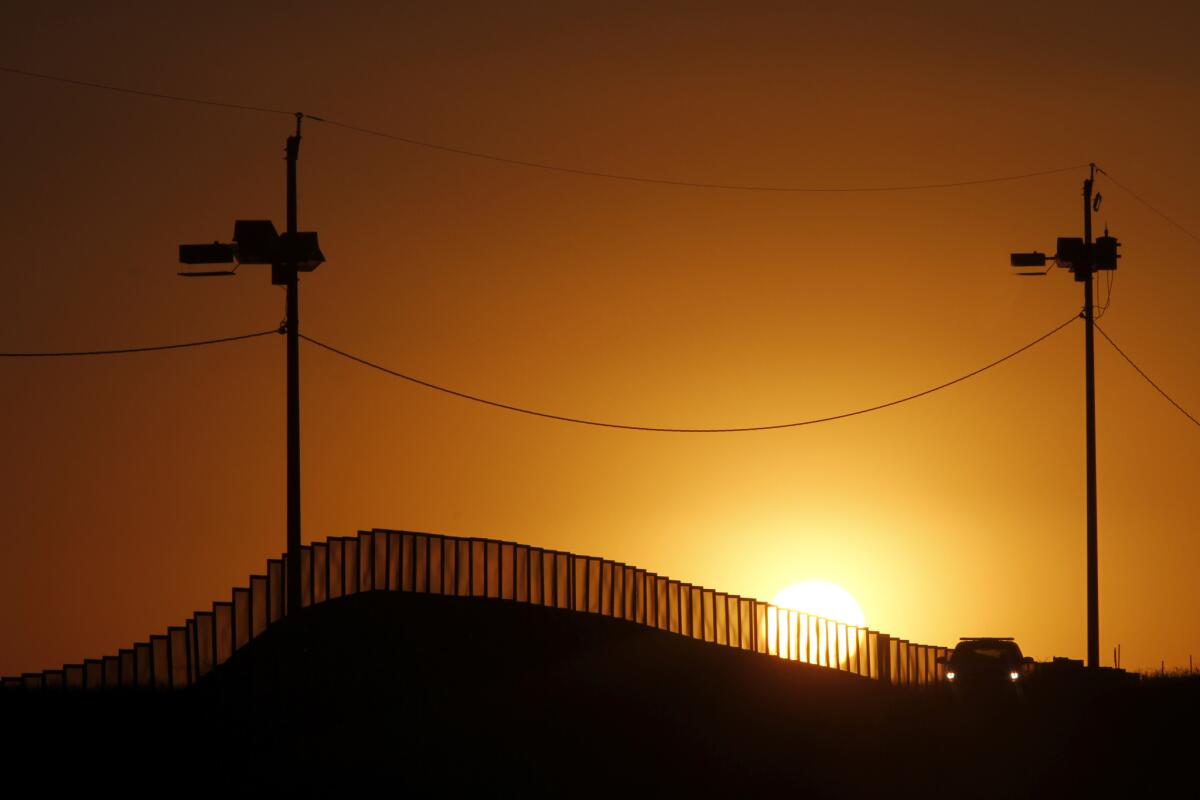Video images reveal filthy, crowded conditions in Border Patrol holding cells
- Share via
Reporting from Phoenix — For more than two years, the Border Patrol has assured the public that its processing facilities, while cramped, are perfectly sanitary places to hold migrants found in the country illegally. On the rare occasions when their facilities were put into public view, the cells were sparkling, empty and warm.
On Thursday, for the first time in the Border Patrol’s history, images of the occupied cells were unsealed as part of a federal court case. Several images show dozens of men crowded into a single cell while nearby cells remain empty. Photos show people sleeping on benches or the concrete floor while bedding is available, unused, in adjacent cells.
The images do not show a thermometer, but appear to support migrants’ accusations that the facilities are kept at conditions so cold that they have earned the name hieleras — Spanish for iceboxes. Detainees huddle in some images; a row of legs in another image can be seen sticking out from under a Mylar emergency blanket.
Women and children are supposed to be given a mat and a blanket when they enter the processing facilities. The images, which were taken from security camera footage last summer, show women and children in a cell without adequate bedding, wrapped in emergency blankets.
Processing centers are not the major detention facilities like in Artesia, N.M., or Eloy, Ariz., where federal immigration authorities have held migrants for months. Instead, the centers are designed to hold people for only a few hours, though their detentions can sometimes stretch to days.

“They were never intended and not designed to be long-term facilities,” said Nora Preciado, an attorney with the National Immigration Law Center, one of the organizations suing the Border Patrol over its treatment of migrants in the processing centers.
The NILC and other organizations, including the American Civil Liberties Union of Arizona, allege the conditions in the cells are so deplorable that it is unconstitutional. The lawsuit in federal court in Arizona was filed on behalf of anyone detained for eight or more hours in a calendar day in one of eight processing facilities in the Border Patrol’s Tucson sector, which stretches from western Arizona to the New Mexico border.
The lawsuit also accuses the Border Patrol of actions that cannot be documented on camera, such as not allowing detainees to shower or providing them access to basic sanitation and hygiene, including toothbrushes.
The Border Patrol replied in court that it keeps the temperature between 68 degrees and 80 degrees. The agency acknowledges that sometimes trash accumulates in the cells from food and blanket wrapping, but says it has cleaning contracts at each station to maintain the cells.
The agency says showers are offered to detainees who are in the facility longer than 72 hours, and “provides a number of personal hygiene items for detainees to use.”
The Border Patrol fought the release of the images in court, arguing that metadata on the video stills contained sensitive information about the agency’s data collection methods.
But U.S. District Court Judge David C Bury ruled against them, and the data was redacted in the video stills unsealed by the court.
Attorneys for the plaintiffs argue that the release of the images is only the beginning of the process to show the conditions inside the facilities.
“When we start to depose people who worked at those places,” Preciado said, “we’ll learn a lot more.”
ALSO
In an attempt to stem abuses, the Border Patrol gets a new chief — from the FBI
Border Patrol reports using force less frequently, but critics don’t have much faith in data
How Tasers became instruments of excessive force for the Border Patrol
More to Read
Sign up for Essential California
The most important California stories and recommendations in your inbox every morning.
You may occasionally receive promotional content from the Los Angeles Times.











